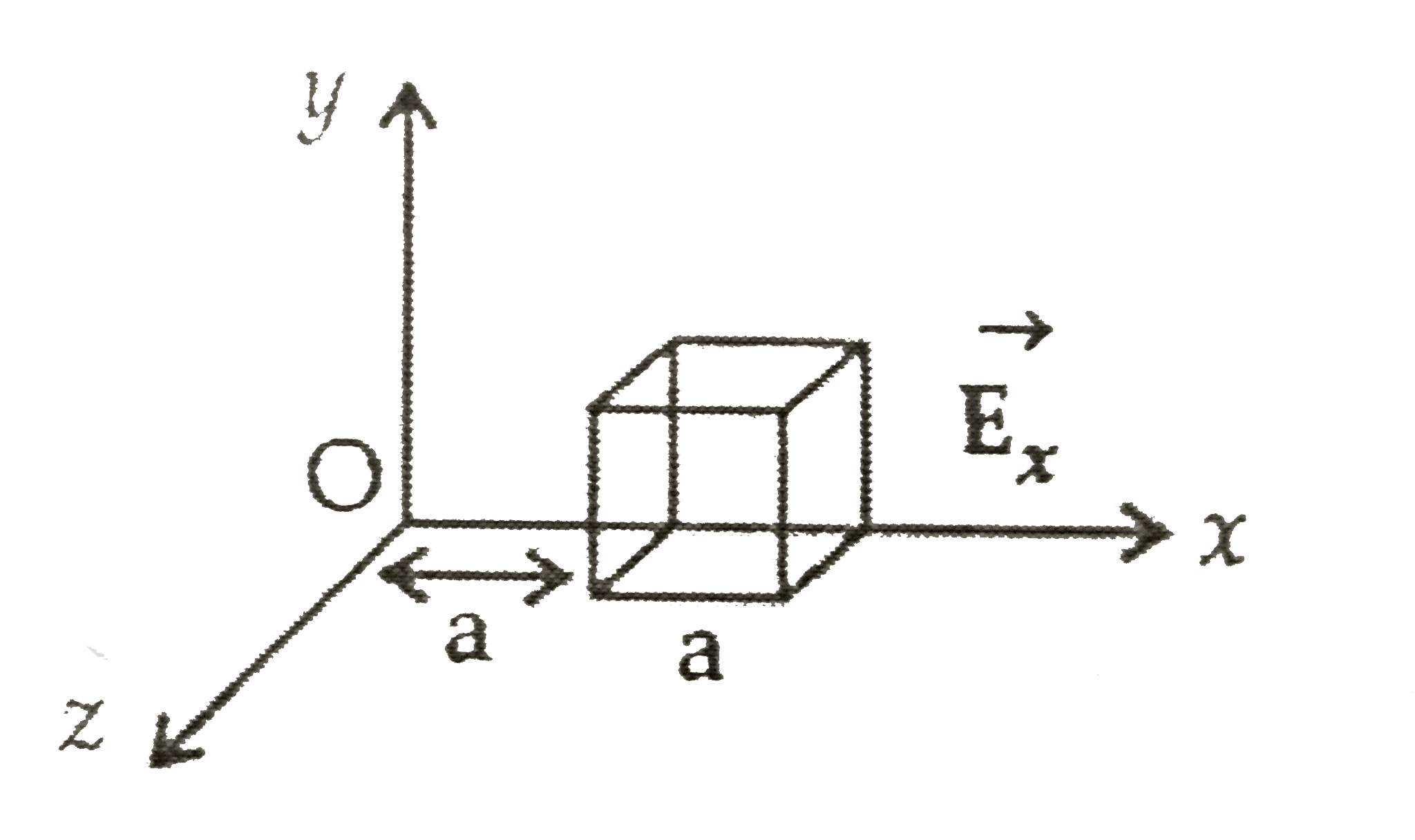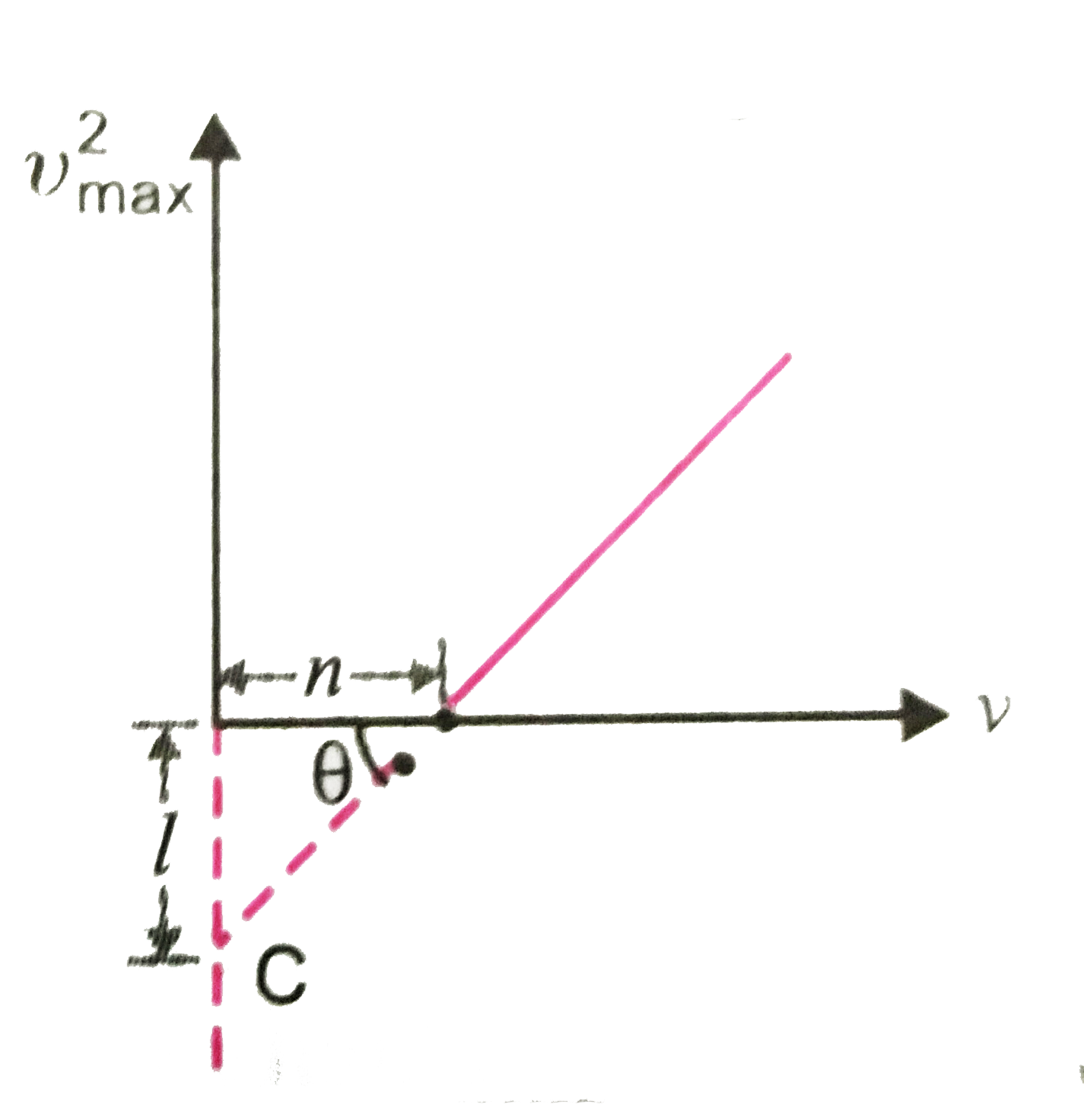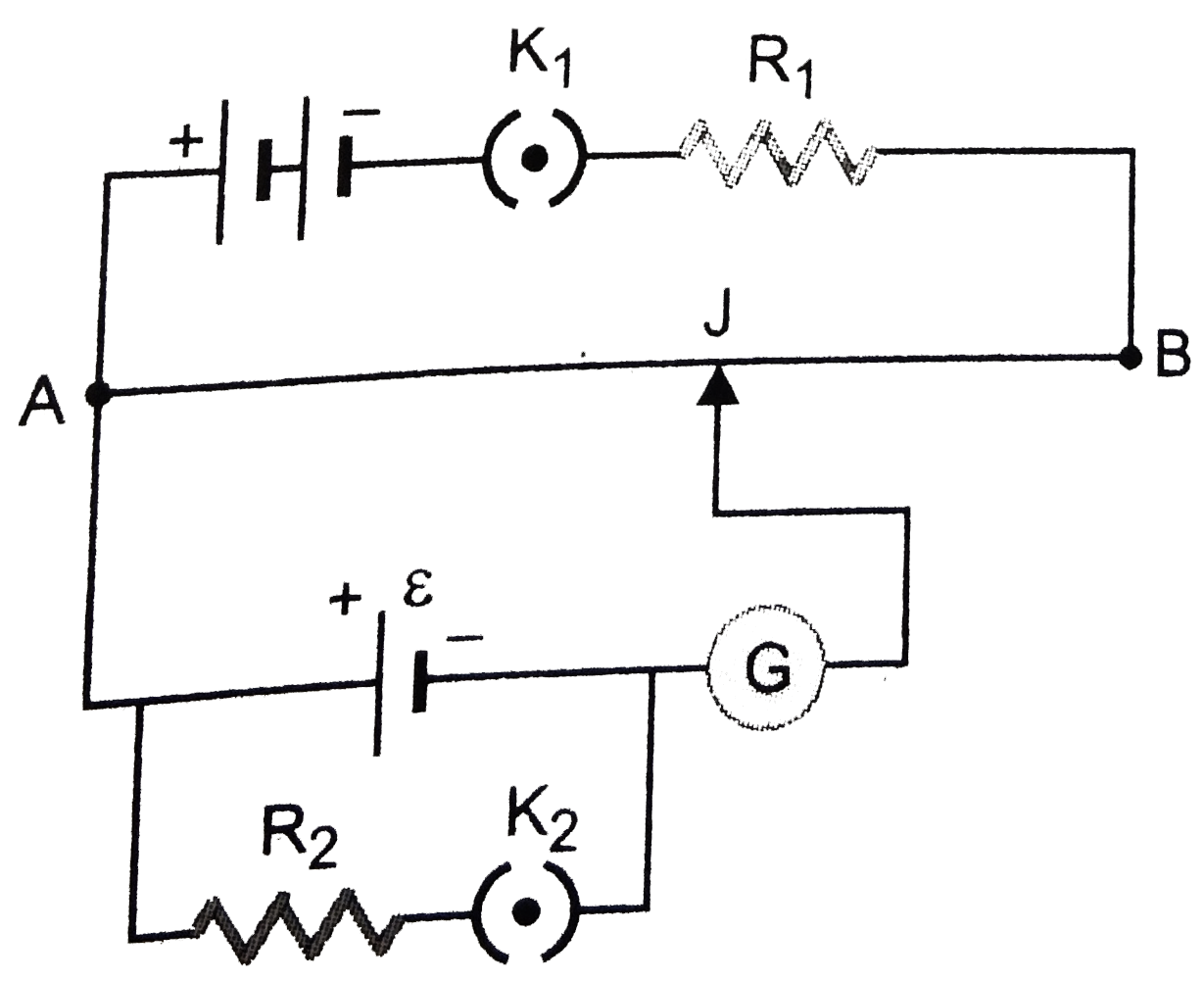Complete Solutions to SECTION - C of chapter XII BOARDS of Class 12 book with complete answers and questions
| Class 12 | PHYSICS |
| Chapter | XII BOARDS |
| XII BOARDS PREVIOUS YEAR | SECTION - C |
| Number Of Questions | 23 |
| Academic Year | 2023-24 |
(a) Draw a plot showing the variation of potential energy of a pair of nucleons as a function of their separation . Mark the regions where the nuclear force is :
(i) attractive and (ii) repulsive.
(b) In the nuclear reaction
`n+underset(92)(235_(Uto))underset(54" ")(a_(Xe+))underset(b" ")(94_(Sr+2n))` determine the values of a and b .
View SolutionDraw a labelled circuit diagram of n - p - n germanium transistor in common emitter configuration. Explain briegfly , how this transistor is used as a voltage amplifier.
View Solution(a) State Biot - Savart law and ecpress it in the vector form.
(b) Using Biot - Savart law, law obtain the expression for the magnetic field due to a circular coil of radius r, carrying a current I at point on its axis distant x from the centre of the coil.
View SolutionDefine electric flux and write its SI unit . The electric field components in the figure shown are : `E_(x)=alphax,E_(y)=0,E_(z)=0` where `alpha=(100N)/(Cm)`.
Calculate the charge within the cube , assuming a = 0.1 m .

View SolutionAn electron falls through a distance of 1.5 cm in a uniform electric field of magnitude `2.0xx10^(4)N//C(Fig.a)`

Calculate the time it takes to fall through this distance starting from rest. If the direction of the field is reversed (fig .b) keeping its magnitude unchanged, calculate the time taken by a proton to fall through this distance starting from rest.

View SolutionUsing Kirchhoff ' s rules , calculate the potential difference between B and D in the circuit diagram as shown in the figure.

View SolutionDefine SI unit of current in terms of the force between two parallel current carrying conductors.
(b) Two long straight parallel conductors carrying steady currents `I_(a)andI_(b)` along the same direction are separated by a distance d. How does one explain the force of attraction between them ? If a third conductor carrying a current `I_(c)` in the opposite direction is placed just in the middle of these conductors , find the resultant force acting on the third conductor.
View Solution(a) With the help pf a ray diagram , show how a concave mirror is used to obtain an erect and magnified image of an object .
(b) Using the ray diagram below , obtain the mirror formula and the expression for linear magnification.
View SolutionTwo cells of emfs `epsilon_(1)and epsilon_(2)` and internal resistances `r_(1)and r_(2)` respectively are connected in parallel . Obtain expressions for the equivalent (i) resistance and , (ii) emf of the combination.
View Solution(i) Write two points to distinguish between interference and diffraction fringes.
(ii) In a Young 's double slit experiment , fringes are obtained on a screen placed at certain distance away from the slits . If the screen is moved by 5 cm towards the slits , the fringe width changes by 30 `mu m` . Given that the slits are 1 mm apart , calculate the wavelength of the light used.
View Solution(a) When an unpolarized light of intensity `I_(0)` is passed through a polaroid , what is the intensity of the linearly polarized light ? Does it depend on the orintation of the polaroid ? Explain your answer.
(b) A plane polarized beam of light is passed through a polaroid . Show graphically the variation of the intensity of the transmitted light with angle of rotation of the polaroid in complete one rotation.
View Solution(a) Write the truth table for the combination of the gates shown in the figure.

(b) Explain briefly how a photodiode operates.
View SolutionWhen a given photosensitive material is irradiated with light of frequency `nu`, and maximum speed of the emitted photoelectrons equals `v_(max)`. The square of `v_(max)`is observed to very with `v`, as per the graph shown in fig. Obtain expression for (i) Planck's constant and (ii) the work function of the given photosensitive material, in terms of the parameter `l`, `n` and the mass `m` of the electrons.

View Solution(a) Draw graph showing the variation of current versus voltage in an electroyte when an external resistance is also connceted.
(b) (i) The graph between resistance (R ) and temperature (T) for Hg is shown in the figure (a). Explain the behaviour of Hg near 4k.
(ii) In which region of the graph shown in the figure (b) is the resistance negative and why?

View SolutionFor the circuit would the balancing length increase, decrease or remain the same if (i) `R_(1)` is decreased (ii) `R_(2)` is increased, without any change (in each case) in the rest of the circuit ? Justify your answer in each case.

View SolutionState the underlying princeiple of mater bridge. Draw the circuit diagram and explain how the unknown resistance of a conductor can be determined by this method.
View SolutionA proton, a deuteron and an alpha particle, are accelerated through the same potential difference and then subjected to a unifrom magnetic field `vecB`, perpendicular to the direction of their motions. Compare (i) their kinetic energies, and (ii) if the radius of the ciruclar path described by proton is 5 cm, determine the radii of the paths described by deuteron and alpha partcile.
View Solution(a) Briefly explain how a galvanometer is converted into an ammeter.
(b) A galvanometer coil has a resistance of `15 Omega` and it shows full scale deflection for a current of 4 mA. Convert it into an ammeter of range 0 to 6 A.
View Solution(a) Briefly explain how a galvanometer is converted into a voltmeter.
(b) A voltmeter of a certain range is constructed by connecting a resistance of 90 `Omega` in series with a galvanometer. When the resistance of `470 Omega` is connected in series, the range gets halved. Find the resistance of the galvanometer.
View SolutionThe figure shows arectangular conducting frame MNOP of resistance R placed partly in a perpendicular magnetic field `vecB` and moved with velocity `vecV` as shown in the figure.
Obtain the expressions for the
(a) force acting on the arm 'ON' and its direction, and
(b) power required to move the frame to get a steady emf induced between the arms MN and PO.

View SolutionDraw aray diagram to show the image formation of a distant object by a refracting telescope. Write the expression for its angular magnification in terms of the focal lengths of the lensesused. State the important considerations required to achieve large resolution and their consequent limitations.
View Solution(a) Plot a graph for angle of deviation as a function of angle of incidence for a triangular prism.
(b) Derive the relation for the refractive index of the prism in terms of the angle of minimum deviation and angle of prism.
View Solution(a) What is amplitude modulation? Draw a diagram showing an amplitude modulated wave obtained by modulation of a carrier sinusoidal wave on a modulating signal.
(b) Define the terms (i) modulation index, and (ii) side bands. Mention the significance of side bands.
View Solution
SECTION - C questions and complete solutions for chapter XII BOARDS of XII BOARDS PREVIOUS YEAR of Class 12
All Exercises from XII BOARDS PREVIOUS YEAR Class 12 PHYSICS XII BOARDS
- C.B.S.E.CLASS-XII PHYSICS (THEORY) [SET-I]
- C.B.S.E.CLASS-XII PHYSICS (THEORY) [SET-I]
- C.B.S.E.CLASS-XII PHYSICS (THEORY) [SET-I] (SECTION-A)
- C.B.S.E.CLASS-XII PHYSICS (THEORY) [SET-I] (SECTION-A)
- PHYSICS
- PHYSICS
- PHYSICS (Theory) DELHI BOARD -2016 [SET -I][COMPTT.]
- PHYSICS (Theory) DELHI BOARD -2016 [SET -I][COMPTT.]
- PHYSICS (Theory) [SET - III]
- PHYSICS (Theory) [SET - III]
- PHYSICS (Theory) [SET - II]
- PHYSICS (Theory) [SET - II]
- PHYSICS (Theory) [SET - I]
- PHYSICS (Theory) [SET - I]
- PHYSICS (Theory) [SET -I]
- PHYSICS (Theory) [SET -I]
- SECTION - C
- SECTION - C
- SECTION - A
- SECTION - A
- SECTION - B
- SECTION - B
- SECTION - C
- SECTION - C
- SECTION - D
- SECTION - D
- SECTION - E
- SECTION - E
- Section -A
- Section -A
- Section -B
- Section -B
- Section -C
- Section -C
- section -D
- section -D
- section -E
- section -E
- section A
- section A
- section B
- section B
- section C
- section C
- SECTION-A
- SECTION-A
- SECTION-B
- SECTION-B
- SECTION-C
- SECTION-C
- Section-D
- Section-D
- Section-E
- Section-E
- SECTIONS-B
- SECTIONS-B
- SECTIONS-C
- SECTIONS-C
- SECTIONS-D
- SECTIONS-D
- SECTIONS-E
- SECTIONS-E
- SET - I
- SET - I
- SET - II (Delhi Board)
- SET - II (Delhi Board)
- SET - III (Delhi Board)
- SET - III (Delhi Board)
- SET -I
- SET -I
- SET -II
- SET -II
- SET -III
- SET -III
- SET I
- SET I
- SET II
- SET II
- SET III
- SET III
- SET-I
- SET-I
- SET-I (SECTION-A)
- SET-I (SECTION-A)
- SET-I (SECTION-B)
- SET-I (SECTION-B)
- SET-I (SECTION-C)
- SET-I (SECTION-C)
- SET-I (SECTION-D)
- SET-I (SECTION-D)
- SET-I (SECTION-E)
- SET-I (SECTION-E)
- SET-II
- SET-II
- SET-II DELHI BOARD (SEC-B)
- SET-II DELHI BOARD (SEC-B)
- SET-II DELHI BOARD (SEC-C)
- SET-II DELHI BOARD (SEC-C)
- SET-II, DELHI BOARD
- SET-II, DELHI BOARD
- SET-III
- SET-III
- SET-III DELHI BOARD
- SET-III DELHI BOARD
- SET-III DELHI BOARD SEC-C
- SET-III DELHI BOARD SEC-C
- SET-III, DELHI BOARD
- SET-III, DELHI BOARD
- [SET - II DELHI BOARD]
- [SET - II DELHI BOARD]
- [SET - III, DELHI BOARD]
- [SET - III, DELHI BOARD]
- [SET - I]
- [SET - I]
- [SET -II, OUTSIDE DELHI]
- [SET -II, OUTSIDE DELHI]
- [SET -III, OUTSIDE DELHI]
- [SET -III, OUTSIDE DELHI]
- [Set- II]
- [Set- II]
- [Set-III]
- [Set-III]